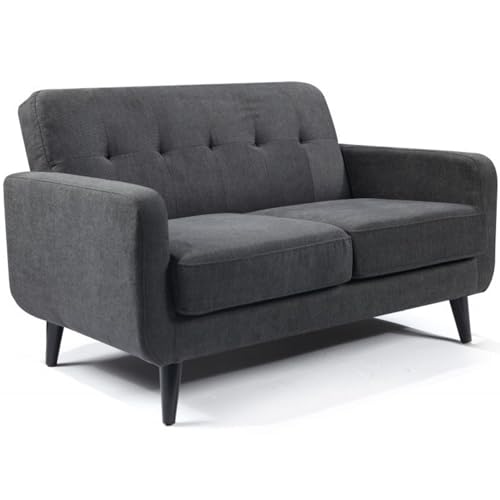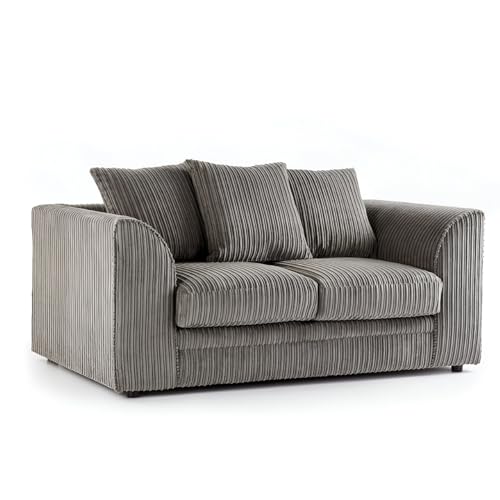Guide To 2 Seater Leather And Fabric Sofa: The Intermediate Guide On 2…
페이지 정보
작성자 Alana 댓글 0건 조회 9회 작성일 24-10-27 19:16본문
 Choosing Between a 2 seater leather and fabric sofa (mouse click the next article)
Choosing Between a 2 seater leather and fabric sofa (mouse click the next article)If you're looking for a new sofa, it is difficult to decide between leather or small fabric 2 seater sofa. This is especially true if you aren't a professional in furniture.
If you have children or live in apartments, the leather option may be a good fit for you. It is easy to clean and looks stunning in most homes.
Comfort
 A sofa is the main focal element of the majority of living spaces and is a major purchase. You want a sofa that can be used for hours and that looks good and stands the test of time. The decision between fabric or leather isn't easy It is crucial to assess your priorities and lifestyle before making a decision.
A sofa is the main focal element of the majority of living spaces and is a major purchase. You want a sofa that can be used for hours and that looks good and stands the test of time. The decision between fabric or leather isn't easy It is crucial to assess your priorities and lifestyle before making a decision.Leather is a luxurious, premium material that exudes elegance and luxury in any home. It is tough, stain-resistant, resistant to pets and children, and can last for a long time if properly cared for. However, it can be more expensive upfront and may require regular conditioning to avoid peeling or cracking.
Fabric sofas are available in a vast selection of styles, colors and fabrics. They are often cheaper than leather sofas. They are also more comfortable and more cosy, and can be "broken into" right from the beginning. They are prone to dust mites and pet hairs, and may require frequent cleaning. However, with new technology and high-performance fabrics, there are now hypoallergenic alternatives available.
The durability of a sofa made of fabric will depend on the quality of the fabric, but most fabrics can last up to 15 years if they are properly maintained. Regular vacuuming and deep-cleaning will keep the fabric free of odours, stains and dirt. They also tend to flatten and sag in time, much as leather. A majority of couches made of fabric two seater sofa are treated with chemicals that make them stain resistant and flame-resistant. They can release volatile organic chemicals that could cause allergies and affect indoor air quality.
Durability
We typically choose sofas with fabrics that are extremely durable, particularly if you have pets or children. You don't want to invest much upfront and then be left with buyer's remorse after the first spill or claws that are crowbarred. In the same way you don't want to purchase something that is cheap but can't withstand everyday use.
Leather is also extremely tough with a tremendous tear strength. It can last up to four times longer than fabric and is innately resistant against cracking, fading, and flaking. It can also be treated to restore its natural oils and appear as fresh as new.
Fabrics are a cheaper option and come in a variety of colors patterns, textures, and patterns to fit any design. Fabrics are less difficult to maintain and can stand up to some wear and tear. However, they do fade with time and are more vulnerable to moisture.
Microfiber is extremely durable and comes in a range of colors. However, it might not be as sturdy as genuine leather. It may also not be able to take scratches. It's nevertheless a great option for families because of its resistance to spills and stains. It's also easy to clean with the help of a damp cloth.
Suede is more difficult to clean and repair than leather. It is prone to lose its shape and feel rough if not regularly maintained. It is also a very thin material and therefore may not be as durable as cowhide and sheepskin leather.
Allergens
Fabrics can have a major impact on allergies. It is important to understand how different options perform. Fabrics are known to hold allergens like dust mites, pet dander and mold, which can cause symptoms of hay fever, rhinitis, asthma and eczema. This is due to the fact that these fabrics provide the perfect environment to allow them to grow.
Leather, on the contrary, does not accumulate allergens and can provide consistent comfort, regardless of season. However, it could cause dermatitis, especially for those who suffer from contact dermatitis or are sensitive to the chemicals that are used in the tanning process. To avoid the risk of skin reactions, it's important to use vegetable-tanned products and to maintain a regular skincare routine.
Both sofas made of fabric and leather are durable, but the material you select will have a major impact on how well your couch can stand up to wear. A top-quality fabric will not suffer from fading or sagging and can withstand spills, body oils and daily use. Many modern couches come with stain-resistant treatments to make cleaning simpler.
You may not be able to completely prevent an allergic reaction to the leather in your sofa but you can to reduce allergens by keeping an lint roller in the vicinity and regularly vacuum your living space. This will help in reducing the amount of dirt, pet hair and dust mites that accumulate on your sofa. If you are still suffering from allergies, you can replace your sofa with a hypoallergenic one. For example, a sofa made of synthetic or vinyl is less likely to keep dust or pet dander out of the mites. It can also allow you to breathe easier.
Scratches
It is important to think about the amount of wear and tear you can expect for a leather couch. The finish, color and the quality of the leather are all important aspects in how long a couch will last. Also, you must make sure that it is sturdy enough to stand up to spills and other messes. You can do this by choosing a couch with a strong hardwood frame and high-density foam cushions.
Leather can be damaged due to various reasons such as stretching it, marking territory or reliving tension. Scratches can be severe, from small fabric 2 seater sofa surface scratches to large punctures and cuts. Minor scratches can be treated by applying a leather conditioner to the area affected. This will restore the balance between moisture and oil in the leather and stop it from drying out or cracking. Deep cuts and scratches might require a different treatment based on the severity of damage.
If you have cats, it is an ideal idea to trim their nails regularly as this can assist in stopping scratching on your couch. You can also retrain the scratching behavior by giving them alternative scratching surfaces such as sisal rope or cardboard. Another option is to use a pet-safe furniture polish that can be applied with soft cloths to the damaged area.
In addition to cleaning your leather couch regularly, it's a good idea to keep it out of the direct sun and other sources of heat because this could dry out the leather. This could cause it to split and become difficult to repair and usually requires reupholstery. It is also a good idea to apply a leather conditioner to keep the leather supple.
Smell
Leather couches can smell different from fabric. This is due to the fact that it's porous and can absorb unwanted odors, such as body odor, smoke or food easily. The good news is, odors usually dissipate with time and especially when you use a nontoxic, fragrance-free cleaner.
If the smell is overwhelming It could mean that something is wrong with the foam. This is typically caused by the chemical off-gassing that occurs in polyurethane that is derived from petroleum. If this is a concern, look for couches that are made from CertiPUR US certified latex or natural latex.
Another way to tell if it's faux leather is to look for texture or bumps on the back of the sofa. This is a sign that the leather is not genuine top grain. You can also conduct a visual check by laying the sofa to one side and looking for any exposed upholstery backing. If you can detect any visible backing, it's likely an artificial material such as polyurethane or polyester. These will have a distinct smell than true leather.
Cleaning your leather sofa regularly can help keep it looking and smelling fantastic. This will keep it looking good and smelling great, as well as preventing it from becoming stiff or cracking as time passes. Start by vacuuming and dusting, then wiping the couch with baking soda (a natural method of eliminating smells). This is recommended to do this every two weeks in order to remove any dirt or dust. Apply leather conditioner to maintain the texture and color of your sofa.
댓글목록
등록된 댓글이 없습니다.